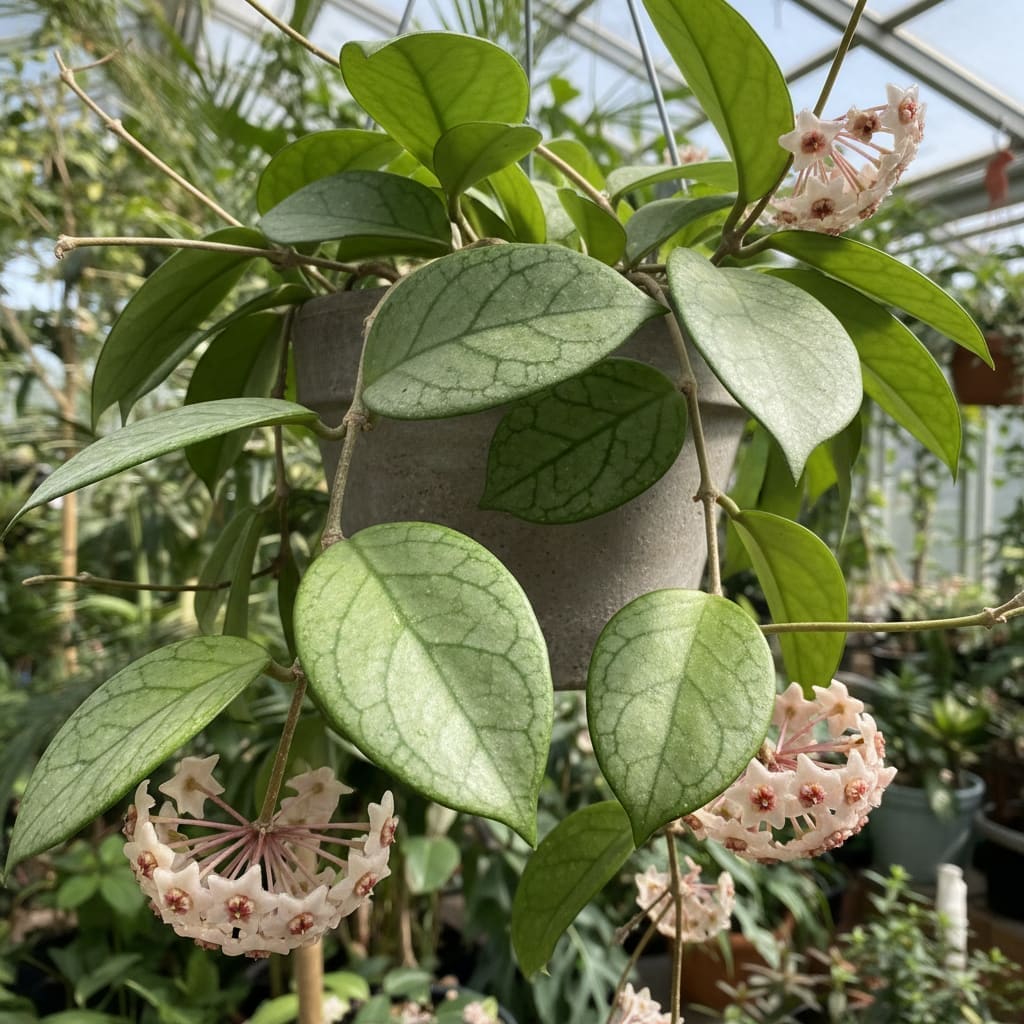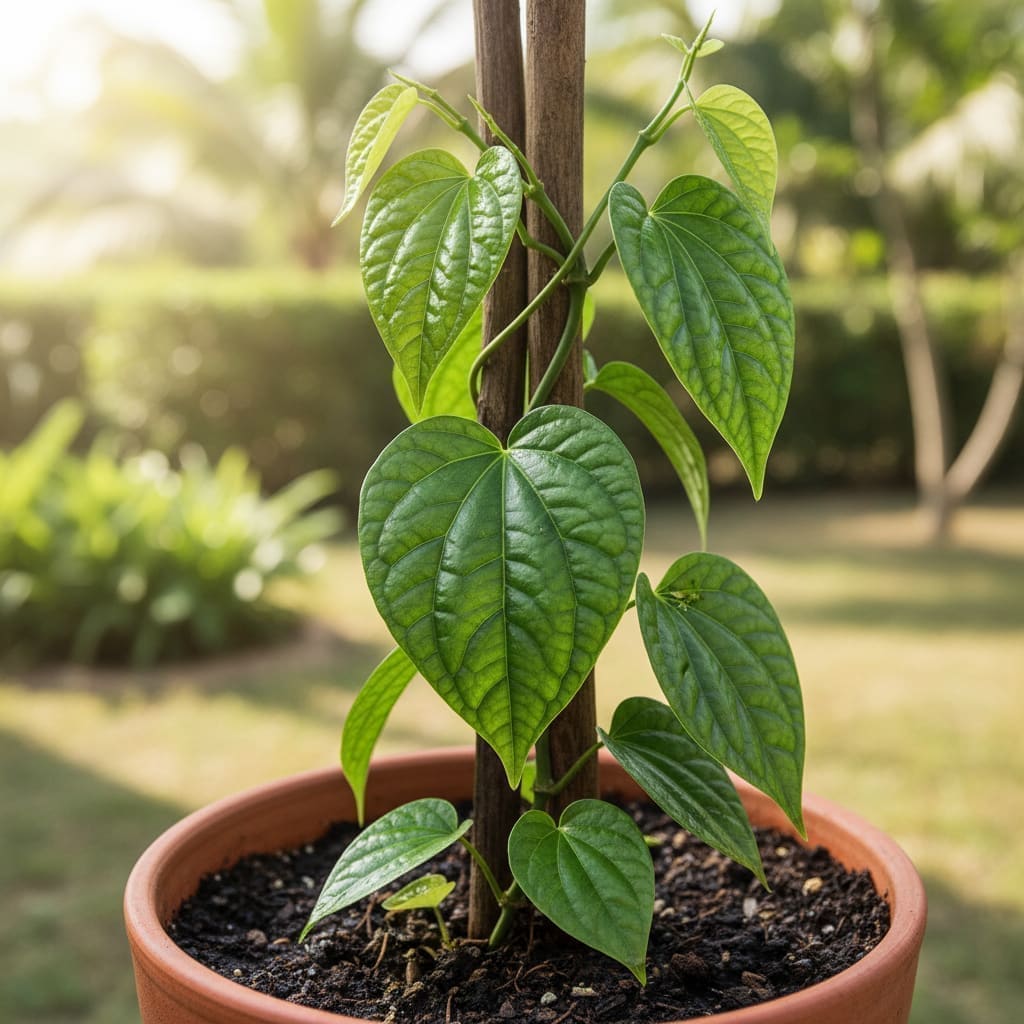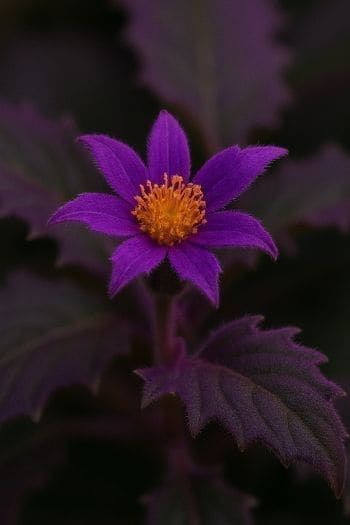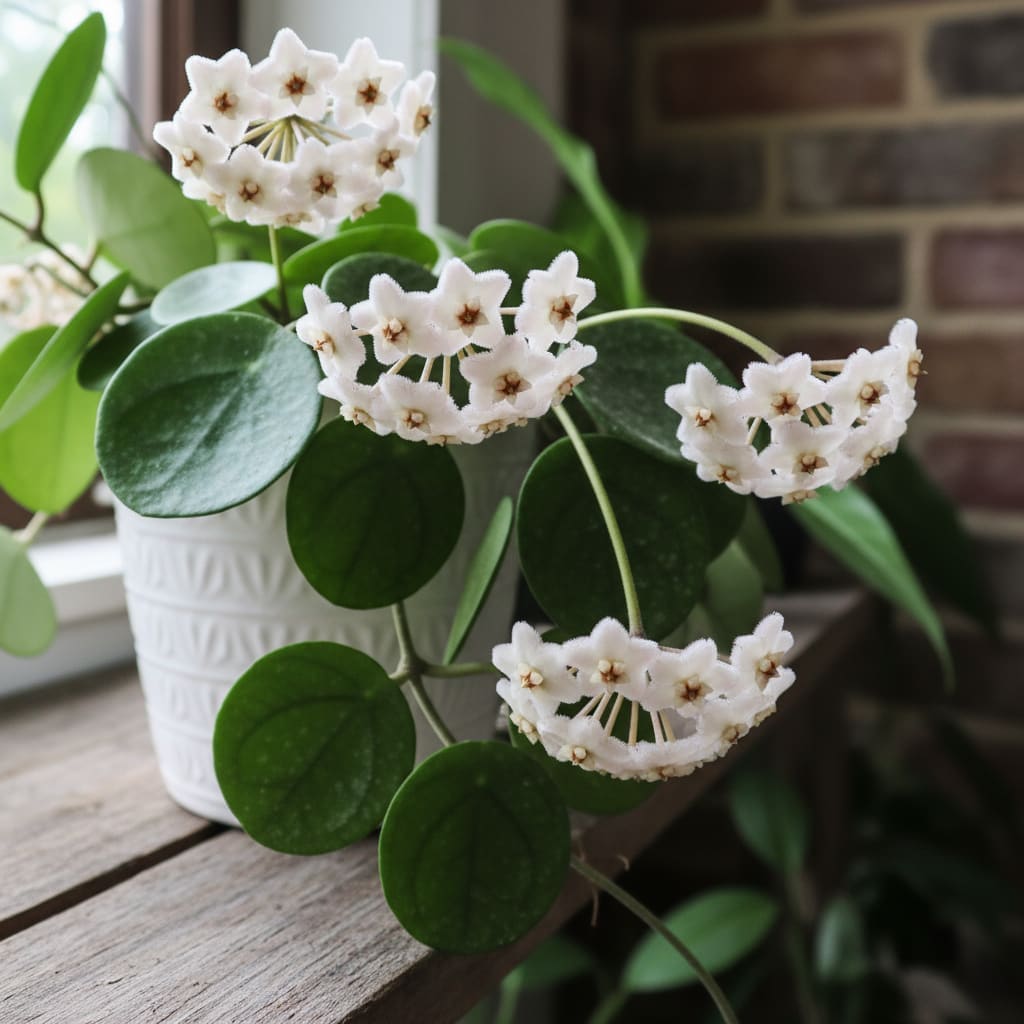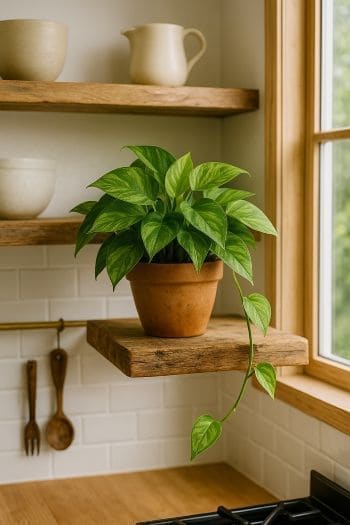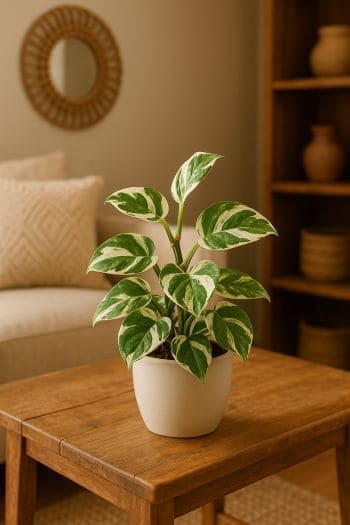Hoya obovata Care & Growing Guide
Overview
Hoya obovata is a striking tropical plant native to Southeast Asia, prized for its thick, round, speckled leaves and clusters of fragrant, star-shaped flowers. This member of the Apocynaceae family is a vining epiphyte that adapts well to indoor cultivation when given the right conditions. Known for its durability and low-maintenance nature, it’s a favorite among houseplant collectors and beginners alike. Interestingly, this plant often blooms more readily when slightly root-bound.
Identification & Growth Habit
Hoya obovata is characterized by large, oval to round leaves with a leathery texture and silvery speckles. The leaves can reach 5–8 cm in width and 8–12 cm in length. It is a trailing or climbing vine that produces long, flexible stems capable of twining around supports. In mature plants, clusters of waxy, pink-to-white flowers with a sweet fragrance emerge, typically in warmer months. Growth is generally moderate, with vines extending steadily under optimal conditions.
Light & Placement
Place your Hoya obovata in bright, indirect light for best results. An east-facing window with morning sun or a few feet back from a south or west-facing window is ideal. Avoid harsh direct midday sun, which can scorch the foliage. Adequate light is crucial for flowering; insufficient light often results in lush foliage but no blooms.
Watering & Humidity
Allow the soil to dry out thoroughly between waterings. When watering, soak the soil until water drains freely from the bottom of the pot, then empty the saucer. Reduce watering frequency in fall and winter when growth slows. Hoya obovata prefers moderate to high humidity but tolerates average household levels. Increase humidity with occasional misting, grouping plants, or using a humidifier during dry months.
Soil & Repotting
Use a well-draining soil mix to prevent root rot. A blend of high-quality potting soil, orchid bark, and perlite works well. Ensure the container has large drainage holes. Repot only when the plant becomes root-bound or the soil has degraded, typically every 2–3 years. Keeping the plant slightly root-bound can encourage flowering.
Fertilizing
Feed biweekly during the active growing season (spring and summer) with a balanced liquid fertilizer diluted to half strength. For foliage growth, a nitrogen-rich formula is beneficial; switch to a phosphorus-rich fertilizer if flower buds appear. Avoid fertilizing in winter when the plant is dormant.
Pruning & Training
Prune to remove dead or damaged leaves and to control size. Hoya obovata’s vining habit makes it suitable for training on a trellis, moss pole, or hoop. Avoid cutting off the short spurs (peduncles) from which flowers emerge, as these can rebloom in subsequent seasons.
Propagation
Step-by-Step Stem Cutting Method
- Select a healthy stem with at least two nodes and a few leaves.
- Using sterile scissors or pruners, cut just below a node.
- Remove the lower leaf to expose the node.
- Place the cutting in water or a moist, well-draining soil mix.
- Keep in bright, indirect light and maintain moderate humidity.
- Roots typically develop in 3–6 weeks; transplant to a pot when well established.
Spring and summer are the best seasons for propagation, as the plant is actively growing.
Common Problems
Pests
- Mealybugs: Appear as white cottony masses. Remove manually with a cotton swab dipped in alcohol or treat with insecticidal soap.
- Spider mites: Cause stippling and fine webbing. Increase humidity and wash leaves; use miticide if needed.
- Scale insects: Brown, shell-like bumps on stems. Scrape off gently and treat with horticultural oil.
Diseases
- Root rot: Caused by overwatering or poorly draining soil. Remove affected roots and repot in fresh, well-draining mix.
- Leaf spot: Fungal or bacterial; remove affected leaves and improve air circulation.
Toxicity & Pet Safety
Hoya obovata is considered toxic if ingested by pets or humans. Keep out of reach of cats, dogs, and small children.
Styling & Decor Tips
Showcase Hoya obovata in a hanging basket to highlight its trailing vines, or train it vertically on a trellis for a sculptural look. Its thick, patterned leaves complement minimalist, modern, or tropical interiors. When in bloom, position it where the fragrant flowers can be appreciated.
Varieties & Cultivars
While the standard green-leaved form is most common, variegated Hoya obovata cultivars with cream or yellow leaf margins are also available. These tend to grow more slowly and may require slightly more light to maintain variegation.
Buying Tips & Maturity
Choose plants with firm, blemish-free leaves and no signs of pests. Check that the soil is not waterlogged. Younger plants may take several years to flower; maturity and slightly root-bound conditions often trigger blooming.
Seasonal Care
- Spring/Summer: Active growth; increase watering frequency, fertilize biweekly, and consider propagation.
- Fall: Gradually reduce watering; stop fertilizing as growth slows.
- Winter: Minimal watering; avoid cold drafts and maintain stable temperatures.
FAQ
- How often should I water Hoya obovata? Water only when the soil has dried out completely, then water thoroughly.
- Why isn’t my Hoya obovata flowering? Insufficient light, lack of maturity, or excessive repotting can delay blooms. Ensure bright, indirect light and allow the plant to become slightly root-bound.
- Can Hoya obovata grow in low light? It can survive in lower light but will grow slowly and is unlikely to flower. Bright, indirect light is recommended.
- Should I mist my Hoya obovata? Occasional misting can help in dry conditions, but it’s not essential if humidity is moderate.
- Is Hoya obovata suitable for beginners? Yes, it’s a hardy plant that tolerates occasional neglect, making it beginner-friendly.
Troubleshooting Scenarios
- Wrinkled leaves: Often a sign of prolonged dryness or underwatering; check soil moisture and adjust watering schedule.
- Yellowing lower leaves: May indicate overwatering or poor drainage; inspect roots and improve aeration of the soil mix.
- No new growth in summer: Could be due to insufficient light or depleted nutrients; relocate to a brighter spot and resume balanced feeding.
- Flower buds dropping: Stress from sudden temperature changes or moving the plant; keep conditions stable during bud development.
Advanced Pruning & Training
For fuller growth, pinch back vine tips in early spring to encourage branching. Use soft ties to guide vines along decorative frames or circular supports for a living wreath effect. Layering a vine back into the pot can create a denser plant over time. When training vertically, rotate the plant periodically to ensure even light exposure and symmetrical growth.
Companion Plant Suggestions
Pair Hoya obovata with other tropicals that enjoy similar light and watering needs, such as:
- Pothos (Epipremnum aureum): Contrasting leaf shape and variegation.
- Philodendron micans: Velvety foliage adds textural contrast.
- Peperomia obtusifolia: Compact form complements trailing vines.
- Ferns (e.g., Nephrolepis exaltata): Soft fronds balance the bold Hoya leaves.
Do & Don't List
- Do: Use clean, sharp tools for pruning to prevent disease spread.
- Do: Allow the plant to acclimate to new environments gradually.
- Don't: Remove flower spurs after blooming; they can rebloom.
- Don't: Place in cold drafts or near heating vents, which can cause stress.
